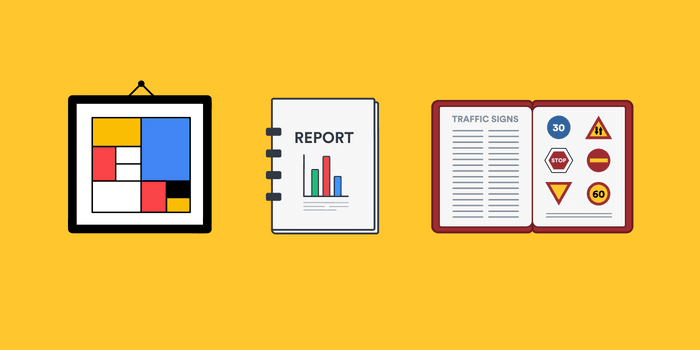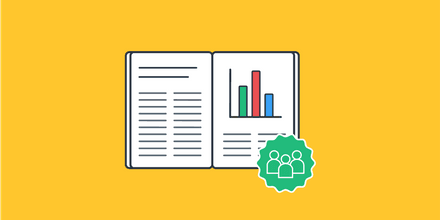
What are primary, secondary, and tertiary sources? In this blog post, we define these different source types and discuss how to find and evaluate them to ensure that they are credible.
What is a primary source?
Primary sources include literary texts (poetry, novels, plays, etc.), historical documents, interviews, and survey data. Depending on the type of paper you’re writing, you might analyze existing primary sources or conduct primary research of your own.
What is a secondary source?
Secondary sources include journal articles, academic books, or conference proceedings. They use the data or textual information from primary sources, along with other secondary sources, to make a claim or argument about a specific research topic. The bulk of the sources that you’ll use for a typical research paper will be secondary sources.
What is a tertiary source?
A tertiary source is one that summarizes secondary research on a given topic. The most well-known tertiary source is the encyclopedia. However, you’ll encounter other types of tertiary sources when you undertake academic research.
For instance, many academic publishers produce handbooks and companions to various subjects, both of which can be considered tertiary sources.
When do you need to use primary, secondary, or tertiary sources?
Your topic and research aims will ultimately determine which source types you need to use, although most research papers, regardless of field, will utilize secondary sources.
Primary sources are most common in humanities subjects like literature and history. Tertiary sources are frequently used as reference materials, but, as long as they are peer-reviewed, you can cite them in your paper. Handbooks and companions cite secondary sources, so they can also be useful for finding additional evidence.
How do you find primary, secondary, and tertiary sources?
The best place to find primary, secondary, and tertiary sources is your school library’s website. You can use the online catalog to locate scholarly books or you can search for secondary sources through one of your library’s databases.
If you’ve never used your school library’s resources before, consider scheduling a research consultation with a librarian. They can help you generate keywords, search for sources, and narrow down your research topic.
Tips for finding and evaluating sources
1. Limit your search to peer-reviewed sources
Whether you’re using a library database or Google Scholar to search for academic sources, be sure that you limit your results to those that are peer-reviewed. This will help to ensure that the sources you find are credible.
2. Ask a librarian
Librarians can help you find, and evaluate, sources for any research topic. Some librarians specialize in a particular field or subject, so be sure to check your school library’s website to see if there is a librarian who can assist you with your specific topic.
3. Use the CRAAP method
CRAAP stands for Currency, Relevancy, Authority, Accuracy, Purpose. To establish a source’s currency and relevance, pay attention to when it was written or published.
If you’re looking for primary sources like historical documents, you’ll need to establish when the source was created. For secondary or tertiary sources, pay attention to the publication date. Some fields are constantly changing, so works published before a certain year may no longer be relevant.
Authority refers to both the authors’ credentials and the place where the resource was found. Peer-reviewed, secondary or tertiary sources will typically list an author’s affiliation or job title. If you found the source in one of your school library’s databases, then it’s most likely authoritative.
Review the source’s content to figure out its purpose and to investigate its accuracy. Does it have citations or references? Is the tone of the work objective or is its purpose to sell you something? Are the work’s claims backed up by evidence? If the work has been peer-reviewed or refereed, then the accuracy has already been vetted by experts.
4. Scan a source’s citations and bibliography
When you find a useful secondary or tertiary source, take a look at its citations and bibliography. The sources that are cited will likely be related to your topic. You can keep track of the sources that you find by making a working bibliography.
A “working” bibliography is so called because it isn’t necessarily the final version that you’ll turn in with your paper. Use BibGuru’s citation generator to instantly create a bibliography of the sources you discover as you conduct research. Take advantage of BibGuru’s projects and folders feature to sort your sources by type or other categories.
Frequently Asked Questions about primary, secondary, and tertiary sources
🍿 What is a primary source?
Primary sources include literary texts (poetry, novels, plays, etc.), historical documents, interviews, and survey data.
🎺 What is a secondary source?
Secondary sources include journal articles, academic books, or conference proceedings.
🚇 What is a tertiary source?
A tertiary source is one that summarizes secondary research on a given topic. The most common type of tertiary source is the encyclopedia.
🏕 How do you identify secondary sources?
Most of the secondary sources that you’ll encounter in your research include components like introductions, literature reviews, and conclusions. Depending on the field, they may also include sections on methods and results.
📮 How do you find secondary sources?
The best way to find secondary sources is to use your school’s library website. There, you can search major databases, as well as the library catalog, for peer-reviewed journals, articles, and books.


